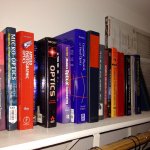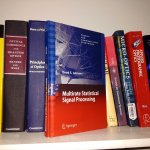Bill, I appreciate the compliment. It is very kind of you.
On the surface, it seems impossible to make any major improvements in the usability and ergonomics of binoculars. After all, they have been invented more than a century ago and the basic optical structure has remained the same. But this is no reason to stop exploring.. Think about archery. The bow has been invented when humans lived in caves and has been gradually improved until it reached its apex during the middle ages. Then, all of a sudden in 1960s, Mr. H. W. Allen, Jr. living in the American Midwest revolutionized archery with the invention of the compound bow!
I think we can do same to our beloved field of sporting optics. The more I learn about binoculars and human vision, the more I am convinced that there are still possibilities for improvement (not just better coatings and less aberrations etc.) We already have great contrast and resolution in existing binoculars but the way this image is delivered to the human eye might not be ideal. My invention here is just a first [crude] step.
I invite you, Ed, Holger and other members of the forum who have sufficient knowledge of optics to think about improving binoculars. This would be more useful than spending countless hours debating weather Swarovski X model has less color contrast than Leica Y model. Even if we fail, we learn something and we get credit for trying:
"It is not the critic who counts; not the man who points out how the strong man stumbles, or where the doer of deeds could have done them better. The credit belongs to the man who is actually in the arena, whose face is marred by dust and sweat and blood; who strives valiantly; who errs, who comes short again and again, because there is no effort without error and shortcoming; but who does actually strive to do the deeds; who knows great enthusiasms, the great devotions; who spends himself in a worthy cause; who at the best knows in the end the triumph of high achievement, and who at the worst, if he fails, at least fails while daring greatly, so that his place shall never be with those cold and timid souls who neither know victory nor defeat. - Theodore Roosevelt April 23, 1910"
Leave your spectator seats and come join me in the arena...

Regards,
-Omid








